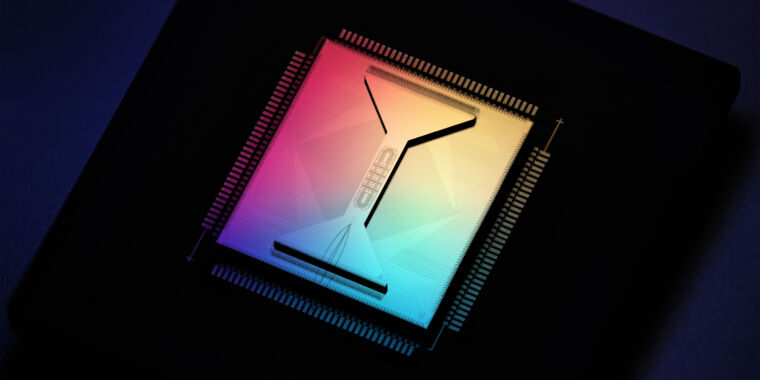Quantinuum
On Tuesday, Microsoft made a series of announcements related to its Azure Quantum Cloud service. Among them was a demonstration of logical operations using the largest number of error-corrected qubits yet.
“Since April, we’ve tripled the number of logical qubits here,” said Microsoft Technical Fellow Krysta Svore. “So we are accelerating toward that hundred-logical-qubit capability.” The company has also lined up a new partner in the form of Atom Computing, which uses neutral atoms to hold qubits and has already demonstrated hardware with over 1,000 hardware qubits.
Collectively, the announcements are the latest sign that quantum computing has emerged from its infancy and is rapidly progressing toward the development of systems that can reliably perform calculations that would be impractical or impossible to run on classical hardware. We talked with people at Microsoft and some of its hardware partners to get a sense of what’s coming next to bring us closer to useful quantum computing.
Making error correction simpler
Logical qubits are a route out of the general despair of realizing that we’re never going to keep hardware qubits from producing too many errors for reliable calculation. Error correction on classical computers involves measuring the state of bits and comparing their values to an aggregated value. Unfortunately, you can’t analogously measure the state of a qubit to determine if an error has occurred since measurement causes it to adopt a concrete value, destroying any of the superposition of values that make quantum computing useful.
Logical qubits get around this by spreading a single bit of quantum information across a collection of bits, which makes any error less catastrophic. Detecting when one occurs involves adding some additional bits to the logical qubit such that their value is dependent upon the ones holding the data. You can measure these ancillary qubits to identify if any problem has occurred and possibly gain information on how to correct it.
There are many potential error correction schemes, some of which can involve dedicating around a thousand qubits to each logical qubit. It’s possible to get away with far less than that—schemes with fewer than 10 qubits exist. But in general, the fewer hardware qubits you use, the greater your chance of experiencing errors that you can’t recover from. This trend can be offset in part through hardware qubits that are less error-prone.
The challenge is that this only works if error rates are low enough that you don’t run into errors during the correction process. In other words, the hardware qubits have to be good enough that they don’t produce so many errors that it’s impossible to know when an error has occurred and how to correct it. That threshold has been passed only relatively recently.
Microsoft’s earlier demonstration involved the use of hardware from Quantinuum, which uses qubits based on ions trapped in electrical fields. These have some of the best error rates yet reported, and Microsoft had shown that this allowed it to catch and correct errors over several rounds of error correction. In the new work, the collaboration went further, performing multiple logical operations with error correction on a collection of logical qubits.

